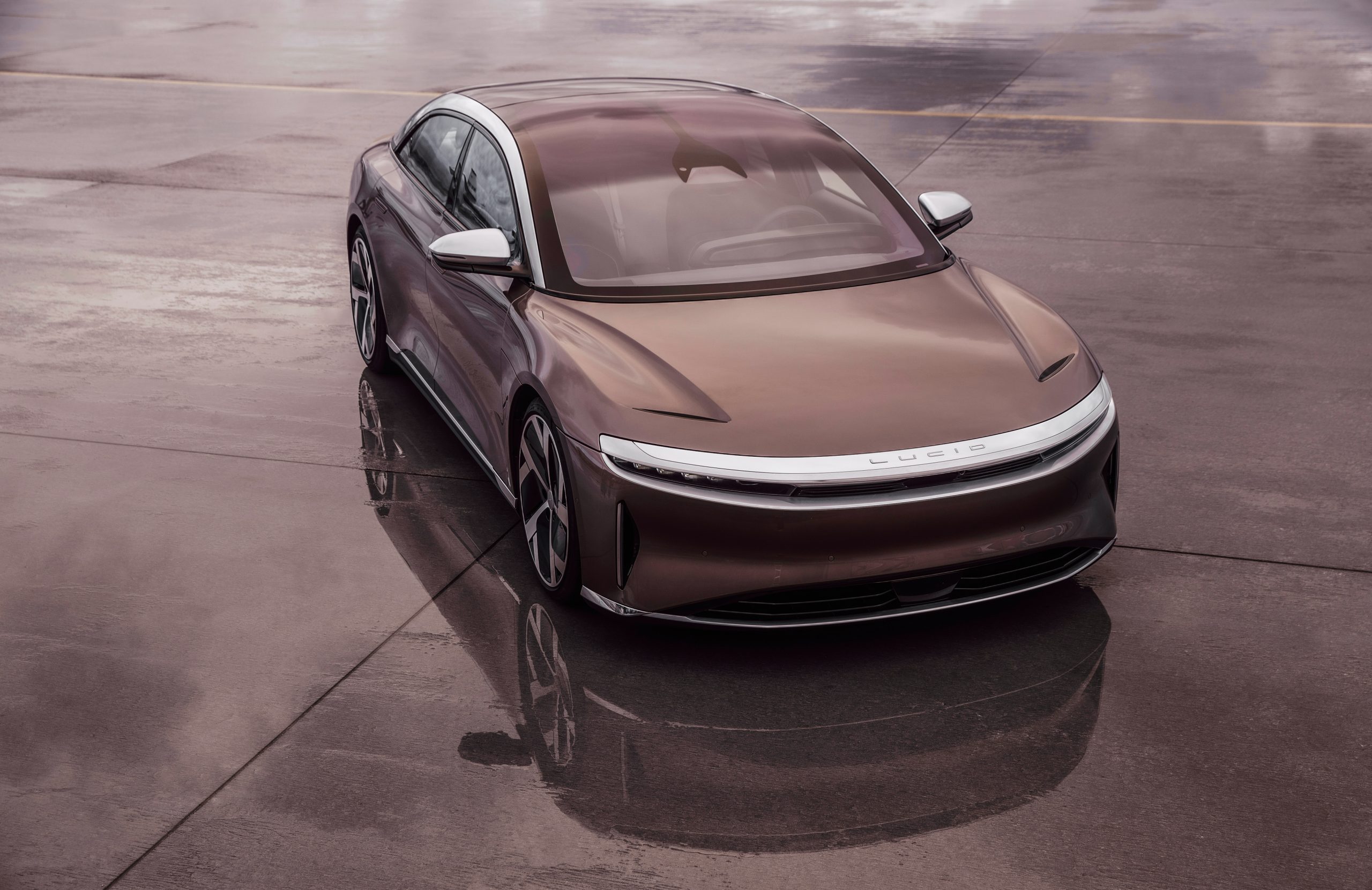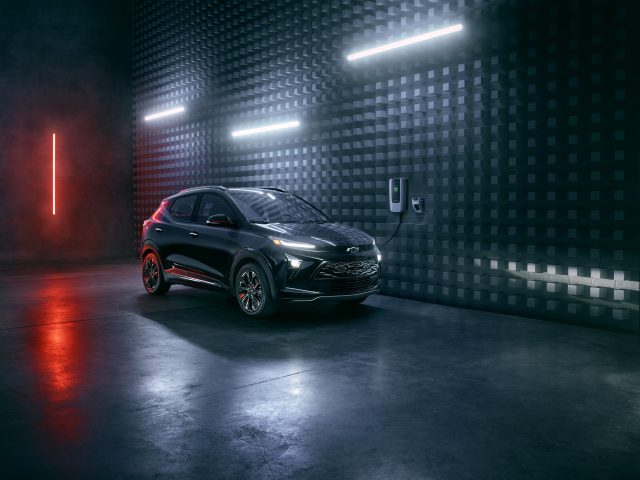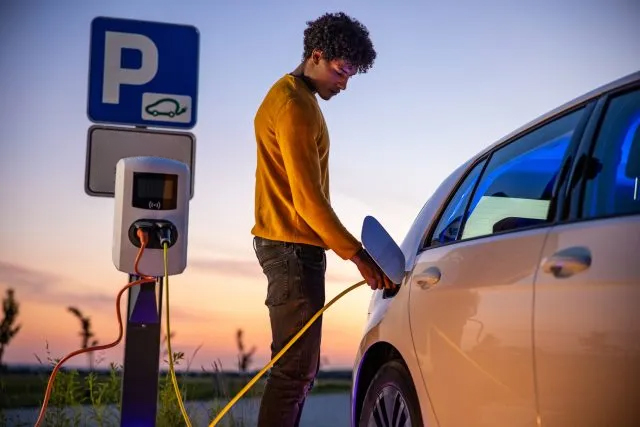A recent AAA survey of electric vehicle owners found that nearly all (96%) would buy or lease another the next time they were in the market for a new car. And word has spread: Sales of EVs through the first five months of 2021 grew 150% compared to the same period last year. Even President Joe Biden voiced his support of the green technology by setting a national goal for EVs to make up half of all new vehicle sales by 2030.
Certainly, there could be no better seals of approval. Yet while buying electric cars has grown exponentially over the years, it still lags far behind that of traditional gas-powered cars. As of 2020, there were nearly 1.8 million EVs registered in the U.S., according to the Pew Research Center, three times as many as in 2016. That may seem like an impressive growth until you compare it to the 280 million cars in operation across the country. Indeed, EVs represented just 2% of the new cars purchased in the U.S. in 2020.
“Although 40 million Americans have shown interest in buying electric for their next car, actual adoption is happening at a much slower rate,” said Greg Brannon, AAA’s director of automotive engineering and industry relations.
The gap between interest in buying electric car and owning an electric car begs the question: What are the hurdles preventing the widespread adoption of EVs, and, more importantly, are they capable of being cleared?
Upfront Cost
There’s no getting around it: buying electric cars costs more, at least initially, than gas-powered cars.
The high cost is largely a byproduct of the expensive process of manufacturing EV batteries. Fortunately, battery prices are dropping precipitously. Bloomberg found the average cost to be around $130/kWh as of late 2020, whereas they cost more than $1,000 just 10 years ago. The news outlet predicts batteries will drop to an average of $100/kWh by 2023. This number would represent an important milestone because at $100/kWh per battery, Bloomberg estimates that EVs can be manufactured and sold to a mass market at the same price as gas-powered cars.
The better news for potential EV owners is that the cost of the vehicles is already coming down. The average transaction price for all new vehicles in June 2021 was $42,282, according to Kelley Blue Book. The average transaction price for all electric vehicles was $49,766.
If consumers are able to overcome the initial higher costs, they should be able to make up that difference, if not surpass it, as EV ownership generally costs less than gas-powered cars. The money starts to come back in the form of tax credits. A federal tax credit of up to $7,500 per EV may be available depending on the model of EV as well as the owner’s tax liability. State governments also offer varying tax credits and other incentives that can further reduce the cost.
EV drivers will see additional savings over the lifetime of their ownership, as these vehicles cost less to both maintain and operate. (EVs don’t require oil changes or air-filter replacements, for example.) AAA research found, if maintained according to the automakers’ recommendations, annual EV maintenance costs $330 less than that of gas-powered cars. Then comes the all important factor of “fuel.” While electricity does cost money, it pales in comparison to the price of gasoline. As such, the power required to drive 15,000 miles per year in an EV costs an average of $546, according to AAA, less than half the price of the amount of gas required to travel the same distance.
All told, AAA found the total cost of an EV over five years and 75,000 miles of driving to be less than $600 more than owning a comparable gas-powered car.

Range Anxiety
A recent automotive survey conducted by Deloitte listed driving range to be the biggest concern amongst U.S. consumers regarding all-battery-powered electric vehicles.
This is one problem that, although valid, shouldn’t pose the level of concern that it does. While limited driving range used to be a major issue — not too long ago, it was difficult to find an EV that could travel more than 100 miles on a single charge — it’s becoming less so with each passing year. Today, there are numerous models that can travel 200 miles. Tesla cars, including the best-selling Model 3, feature batteries capable of more than 300 miles. The soon-to-be-released Lucid Air boasts a range of 500 miles.
Range anxiety is likely an effect of drivers simply overestimating how much power they really need. The previous year’s Deloitte survey found the majority of consumers expected EVs to travel more than 200 miles per full charge even though they traveled an average of 27 miles per day. “Range anxiety is generally only a concern to people who don’t drive electric,” said Anja van Niersen, CEO of European EV charging network Allego.
Be that as it may, driving range is still an issue for those who don’t have access to readily available EV chargers, which points to a much more significant barrier to widespread electric car adoption.
Lack of Infrastructure
The lack of public charging stations may just be the most significant hurdle to the widespread adoption of EVs in the U.S. The problem is most notable in two areas. First is with potential EV owners who don’t live in a single-family home, where most EV drivers charge their vehicles. Those who live in apartments don’t have this luxury and therefore have to charge their vehicle elsewhere. This can become a rather burdensome chore after time. Furthermore, apartment property owners are often hesitant at installing such infrastructure as it may be cost prohibitive.
Allowing the use of common outlets also poses problems. Because EV charging consumes more energy than most other residential uses, property managers would likely want residents to pay the electrical costs. This would require devising a way to monitor how much power is being used by each resident.
Regardless of living situations, public infrastructure is needed for all EV owners looking to make long-distance trips. There are more than 43,000 public EV charging stations in the United States, according to the Department of Energy. (If that seems like a large number, consider that there are nearly three times the number of gas stations.) But a 2019 study by the International Council on Clean Transportation found that this is just a fraction of the infrastructure needed. It estimated that 10,000 more charging stations will be required by 2025 to support EVs traveling between cities.
While EV infrastructure has a long way to go, local and federal governments appear committed to the trek. In 2019, two-thirds of U.S. mayors voiced their support of improving infrastructure even at the cost of additional parking space. More recently, a proposed trillion-dollar federal infrastructure bill is allocating $7.5 billion to fund the installation of 500,000 public charging stations across the country. If enacted into law, the legislation would be the federal government’s first-ever investment in EV chargers and, maybe, a sign of things to come.
Interested in purchasing an electric – or gas-powered – vehicle? Let AAA help get you in the perfect car for the right price with a low-interest auto loan.
Visit AAA’s Electric Vehicle platform for more information on these cars of the future.
165 Thoughts on “Why Aren’t More People Buying Electric Cars?”
Leave A Comment
Comments are subject to moderation and may or may not be published at the editor’s discretion. Only comments that are relevant to the article and add value to the Your AAA community will be considered. Comments may be edited for clarity and length.




















Some fire departments won’t use jaws of life due to wiring harness lack of standards.
I don’t hear a scientific analysis of real carbon footprint. Manufacturing energy, battery toxicity, carbon sourced electricity to charge? I’ve had cars with 500 miles per tank. What’s the cost to install a 50 amp charging station at home??
Range anxiety… We have family in NC. NY to NC by our car (Audi Q5) requires only one stop. (With no traffic and a steady speed it can be done without stopping). Most electric cars would take 3 stops and add about about 1 to 2 hours to the trip. Electric vehicles that come close to the needed range are typically in the 6 figure category.
I will be driving from MA. to my Dad’s home in south western N.C. It is 883 miles by way of my GPS routing. I doubt very highly your Audi could make that trip on one tank! Most every car I have driven including my current Ford Escape with 4 cyl. engine makes 3 stops on that same trip! About 390 miles per fill up. So there you go.
I drive a Honda Clarity, which should get a prize as the best car no one ever heard of. It is a PHEV so range anxiety doesn’t exist. 90% of the time I’m on pure EV and the car gets 47 miles on battery alone. For road trips I’ve got the engine and get >40 mpg. Plus I got the $7500 tax credit and a (now expired) state rebate of $2500. The car was cheaper that a gas model with those incentives.
I agree completely. We have a Chevy Volt, a charging station in our garage, and solar panels to produce the electricity for our home (no electric bill for 7 years and the power company pays us for excess). GM decided to stop making the Volt. Bad decision. We will not buy a solely electric car because of the limitations many people have stated here. With the Volt, 90+% of the time we are using the electric motor. The 10% of the time we go beyond the electric range (close to 60 miles in summer and 35 miles in winter in MA) we do not need to think about charging. Most destinations are to cities without on street charging capacity or to locations in the wilderness without hope of having charging stations for a decade or more to come. There is the extra cost of 2 engines and more maintenance costs, but the freedom to go when and where you want without worry is worth it to us. Plus the overall amount of gas/fuel we use is negligible compared to a solely combustion car.
Everyone talks about how EV’s are better for the environment. However, the mining of the lithium for the batteries that power EV’s is terrible for the environment. And how will the disposal of used batteries be dealt with?
Tesla is working on IRON and SODIUM batteries if you read up on the latest goings on. They are trying to get away from lithium and move toward iron because there is PLENTY of that element.
I’m not considering an electric car. The environmental consequences of mining the elements needed for the batteries and the fact that those batteries will just end up in landfills is bad enough, but the limited recharging infrastructure, poor management of the electrical grid sources in the Northeast, reduced battery performance in cold weather, and my need to haul loads larger than a couple passengers all make me question why people are pushing this change so hard.
because people are misinformed, It will be worse for the environment than any Car, the only problem with Cars is the small battery for the environment
One item not covered in the report – time to recharge battery while on a trip and overnight charging is not an option. That time could include waiting for a charging stand to become available.
Have been driving my Tesla Model 3 LR AWD for almost 3 years. It has gotten more reasonably priced . Technology has improved. It’s been a terrific and totally reliable vehicle. Range anxiety might be a concern but it’s not a factor that should determine EV vs Gas. Tesla has built a very smart tech savvy vehicle. It gives you plenty of warning for range concerns and does things itself to preserve energy and safely get you home or to a nearby charger. Tesla is a technology company and it’s cars and years of experience make a tremendous difference in safety and comfort.
What about the longer term affects on our environment? The batteries are a real issue. How we generate electricity to charge the cars. Have we really saved anything? I doubt it.
I tried a hybrid electric car at a dealership the last time I purchased a new car. I did not buy the hybrid because it had to be jump started each time I went for a test drive. Also, the car is so silent, I could not tell if it was on or off.
My greatest concern about EVs is where are the batteries going to go when they reach end-of-life? It seems to me that the more EVs that are in use, the greater the environmental disaster that looms in our future. Regular cars are bad enough!
It seems to me that until all these logistical issues are resolved the typical 2 car family should go with one EV for daily shorter distance use and one gas powered vehicle for longer trips. This would go a long way towards the goal of 50% EV sales by 2030.
A big concern of mine is the amount of time it takes to recharge the battery on a trip. It only takes minutes to refill a gas tank. Even if a charging station is readily available I do not want to wait a couple of hours to recharge the EV.
Hi Michael, the Tesla supercharger stations are quick — I typically wait 20-25 minutes to fully charge my near-depleted batteries. I use the time to get lunch/coffee, etc, or walk our dog.
Biggest problem I see are the lack of charging stations and time to fully recharge the battery. Example, long trips. Many people travel from the northeast states to southern states like Florida in the winter. There are hundreds of gas stations along the main thruways, highways, etc with multiple pumps. Ten minutes or less to fill up and you are back on the road for 400 miles or more of driving until you have to stop to fill up again. With the typical electric car, you have to pull over after about 200 miles or less, probably have to wait on line for the next available charger and then wait for a lot longer than ten minutes to get a full charge. I predict a potential disaster with many trips taking a lot longer than anticipated with hours long delays at electric charging stations. I hope I am wrong.
That’s why, at this time, hybrids with large capacity batteries are the “stopgap answer”.
I agree totally,I use my car for vacations. Can travel 400 miles before I need to refuel, which takes 15 minutes max. Have a choice of stations, not enough choices for electric chargers
You can walk to a gas station to get a gallon of gas if you run out, but you can’t walk and get a gallon of electricity if your car runs dry.
Charging TIME is also a significant concern. For example, the nearest public charging stations are in metered parking spots or grocery store parking lots. In both cases, the ratio of charging stations to parking slots is about 1 to 20. The average errand takes 20 minutes. Can the car charge fully in that time? Fueling a gasoline-powered car takes less than 16 minutes, for a range of 300+ miles. Can an EV charge fully in that amount of time? If the car sits unused for several days, as it might at a vacation destination, do the batteries hold their charge so one can get home again? These are the real obstacles, not a 27 mile daily commute plus overnight charging for a homeowner.
Yes if it is a Tesla Model 3, they are fully capable of charging at a rate of 17 miles additional EV ranger per minute; so in sixteen minutes it can EV range add 273 miles of additional range
If you want to drive across the country from New England to say San Francisco, there are areas in the Midwest and West that are out of range of the common EV!!! Also, if you wanted to take side trips it would not be possible! So Your upbeat discussion that EV’s are the answer is wrong! Until the 200-300 mile gap in EV Charging centers is fixed it is NOT an option!!!!
If I was the gas company like Exxon mobile I would invent a gas engine that get 100 miles to the gallon if they can send that Luna rover to Mars and control it from earth they can make a car get 100 miles per gallon
It may be possible to design a 100-mpg gas or diesel car, but it would look like an airplane (see the Aptera car for example) and would be considered completely impractical by SUV-loving Americans.
Hi Peter, there are more chargers in the Midwest and West than you may realize. Here is a map: https://www.tesla.com/en_EU/findus?v=2&bounds=46.01829905228636%2C-80.43603634375%2C33.420404074393915%2C-118.09716915625&zoom=6&filters=store%2Cservice%2Csupercharger%2Cdestination%20charger%2Cbodyshop
I purchased a Tesla Model 3 a year and a half ago, and have driven it for 27,000 miles. So far I’ve spent $0 on maintenance and repairs. I get 300+ miles of range when fully charged — and it’s a delight to drive past gas stations (especially in winter). I’ve taken dozens of long trips (400+ miles) and charging on the road has never been a challenge: the car’s navigation system automatically suggests charging stations en route, and every one I’ve used has been located in close proximity to food and restrooms – making the stop useful for other needs. Charging at home is simple. The icing on the cake is that the car is a joy to drive – electric cars accelerate quickly, and quietly. I will never purchase another gas-powered car.
Great news It is the future My relative has a Tesla and drove from Massachusetts to New Mexico without any issues. I tells you where the Charging Stations are.
The average car buyer can’t afford Tesla pricing. Also, EV need to match your lifestyle. They certainly don’t match mine, and I think all things considered, they are no great improvement to the environment. I’m staying with internal combustion as long as I can.
How much did you pay for the Tesla and how many kwh does it take to fully charge your ev, and have you considered the EMF you are exposed to.
Hello John, our Telsa cost roughly the same as other cars we considered, and is much less expensive to drive – in part because electricity in our town comes primarily from solar & wind (10.4 cents/kwh). We anticipate stronger Federal incentives to install solar panels after the infrastructure bills are signed, and have determined that our roof will supply nearly all of our needs. Our Tesla home charger delivers 44 miles/hr of charging, so it’s really convenient to keep it charged. I’m not sure about the EMF exposure – I haven’t read anything about that factor yet. Thanks for bringing it up.
I’d question where the electricity actually comes from and how much is actually produced by natural gas.
Now this is one of the most useful posts I’ve seen in regards to this topic – all based upon an individual’s personal experience of owning such a vehicle type for several years. Personally I’ve no issue with going electric in time – and with time, both technology and the product should only get better – thanks to competition.
What about the environmental impact of used batteries.
where are you getting the electricity from the moon? No, you need to produce electricity, by oil or coal-fired station, and what happened to exchanged Batteries? The whole thing is political. If I want to visit my daughter it takes 10 hours, going by electric it will properly a day or two. so I have to look for a motel another expense, what happened if you get stuck in traffic in winter or in heat of Summer with no heat or AC.
Why wouldn’t you have heat or AC?
I’ve driven a Tesla for 8 years. When the battery is nearly out, the driver turns off heat or AC to save battery for a bit more range.
Oil fired plants produce less than 1% of electricity generated in the US, and coal 19% (and falling). If we can combine increasing use of renewable energy in electricity production along with increased use of EVs it will be a net benefit to all of us.
Most electric production in the U.S. is not from coal, or oil, but Natural Gas.
If we only use 1% of electricity generated in the US from oil, and 19% from coal it seems that will need to increase if we move to EVs not decrease. Wind and solar won’t replace that 20% and the electric usage in houses, businesses, etc isn’t decreasing because people drive EVs. Plus we have no understanding of what the electric consumption increase would be if we all drove EVs.
Karl, you are aware that gasoline pumps use electricity, right?
Spent-battery pollution and the tremendous toll that battery production mining imposes on our planet, are two reason for not wanting an EV. The average age of an American car on the road is 12 years. A 12 year old EV will be on its third battery. A Tesla battery cost $10,000 .
Those are straight up lies.
Yes, they are: they totally UNDERESTIMATE the cost!!
A new Tesla battery goes for $15,000 to $20,000 …
REF:
https://www.findmyelectric.com/blog/tesla-battery-replacement-cost-explained/
One other consideration might be the amount of time it takes to charge an electric vehicle. On a long trip, you can fill your gas tank with a five minute stop. How long would it take to fully recharge a battery?
Countries like China would stand to benefit the most from the materials needed for an electric car. The US would depend on other sources for manufacturing. The supply of electricity can also be government controlled or even interrupted by cyber threats. Important to have more than one source of energy.
Using tax dollars to incentivize the purchase of Electric Vehicles (EV) is an example of the inefficiency caused by crony capitalism and central government planning. If EV technology were competitive, the government would not have to subsidize the industry to make it viable. When the nation moved from horses and wagons to automobiles and trucks there was no need for the government to subside the internal combustion engine. Government bureaucrats who have never run a candy store think they know better than the free market, and are trying to get the public to prematurely adopt the EV. If the technology were superior, the heavy hand of government would not be needed to get people to forgo gasoline and diesel powered vehicles in favor of the EV.
You do realize that the government basically paid for the railroad system, remember the Robber Barons? It also paid for ALL the roads you drive on. The Defense Dept. invented the Internet. Government is the driver of most big changes.
Roads are paid by gas taxes, registration fees and tolls. Also known as user fees. Usually not by the general fund. If society did go all electric-all electricity would need to have a user fee attached to pay for roadway upkeep. Incidentally the extra 1000lbs of batteries does an additional 1000lbs worth of damage to the roads. Recommend that all new cars be hybrid rather than full electric or full gas. Slight uptick in maintenance, large uptick (+50%) in mpg
Agree!!!
The point of incentivizing owning an EV is to move away from gas powered vehicles to try and slow or reverse our climate change crisis. Sometimes it takes an incentive to help people change their bad habits and to do the right thing for our planet because everyone is money driven with major purchase decisions.
There is no climate change crisis. You are a victim of having a poor education in science. Scientific method is the process by which a hypothesis like climate change is evaluated in order to determine its validity. Climate change is based on computer models, so these models should be able to make highly accurate predictions about future climate behavior. The reality is that these models can’t be used in this way because they are incomplete and insufficient representations of the climate and the atmosphere. The climate is changing, man no doubt plays a part, but there is no valid evidence to suggest there is an imminent need to change our energy use and our economy. Look into the subject more deeply and stop using the opinions of advocates and politicians and make your own judgements. You will find what I am saying is true.
Your so-called free market incentivizes pollution with the attendant health costs distributed among us all, at a higher price than the taxes needed to incentivize electric vehicles.
Jackie, Here’s to the larger picture:
https://www.instituteforenergyresearch.org
Check out the Environmental Impact of Lithium Batteries
To incentivize EV use, the Gov’t should spend the money on scientists to design rapid charging systems; pray tell, are you willing to spend several hours waiting for your Ev to be charged?
And where do you think all that new electricity is going to come from and what will be the environmental impact of it?
Can we talk about the billions of dollars that U.S. gives in subsidies to trillionaires big oil? If some one is not in need of a hand out, it’s big oil. To produce a product that would eventually lead to the destruction of the world.
The Gov’t does not subsidize “big oil”.. The gov’t derives huge tax revenues from the oil produced in too many ways to enumerate here,
Actually, the government has subsidized air polluting oil for decades.
And humans!
Oil companies receive the same tax break for manufacturing that all other companies use, and this is for converting oil into petroleum products. It is not a subsidy it is a deduction that all manufacturers take.
There is also a added cost of the purchase and installation of a charging station at your home. The actual charging of a car on 110v is absolutely not feesable.you can not charge a car to full charge on 110v in an 8 hr period
How much time is required to fully recharge the battery of an electric car?
charge at home via 120v ac outlet is usually about four miles per hour and about 10 miles per hour for standard 240v ac outlet with at least 20A.
I do not understand what you are saying. 10 miles per hour? It takes an hour of charging for every 10 miles that you want to travel? That cannot be so….
Let me preface this by saying, we’re talking about Level 1 and Level 2 charging speeds here, which are what’s typically used for daily commuting and errands. When EV drivers go on a trip beyond their car’s range, they’ll stop at Level 3 DC fast chargers that can fill the battery pack from 10-20% to 80% during a meal stop. This can take an hour in some EVs, but some newer ones are able to fill up to ~80% in 15 or 20 minutes.
Yes, Dennis is saying that for every hour you’re plugged into a regular 120v 15-amp outlet, your EV will only gain enough charge to travel about 4 miles. That should give you some idea of just how much energy is contained in an EV’s battery pack. Think about how much power is consumed running a hair dryer or a space heater for several hours.
It sounds slow, but even 120v charging works just fine for many EV drivers who leave their car plugged in for ~12 hours overnight. They wake up to an additional 45-50 miles of range which is enough for their daily commute and errands. It’s like an extra 1-1/2 or 2 gallons of gas magically appearing in your car’s tank every night.
If instead of a 120v outlet, you have a 240-volt aftermarket EVSE installed, then for each hour it’s plugged in you’ll gain about 10-12 miles in most plug-in hybrid cars, or 22-26 miles each hour in most all-electric EVs. This is because full EV’s or “BEVs” typically have a 30-amp-capable 240 volt charger onboard, compared with only 15-amp-capable chargers on plug-in hybrids.
If you also have 240v charging stations available at work or someplace you typically stop for an hour or so a few times a week, that can make it even easier to always have enough charge for your commute and other local driving.
We have a Nissan Leaf. If you can access a commercial charging station, which operates at around 300v, a 90 percent charge takes about an hour, a full charge a little longer. At home we have a 220v setup. A full charge takes about 2 hours.
1 HOUR? I don’t have 1 hour to fuel my vehicle. Let’s get real here folks. I have a life to live, not living my life around charging my vehicle.
When we all have electric cars we will all have to schedule our car usage around chargingtimes.
Hopefully we will always have a choice, as electric cars are a lousy answer to a problem that does not exist.
As soon as I read the words “we will have to” you lost me. If your solution includes “we will have to” then I will stick with the current alternatives. If car manufacturers can’t build an EV that can recharge in under 10 minutes, I don’t want one.
Most public chargers are level 2 220 volt. Fast chargers have been anticipated since I bought my first ev in 2017, but I have yet to see one. Ev’s are good for local travel, but I wouldn’t want to have to deal with the charging issue on a long trip. There’s already enough to deal with. Chinese company Nio is working on battery swap cars which is probably a more realistic solution. You drive in with the discharged battery and drive out with a fully charged battery.
Battery swap seems like a good idea if it can be made practical and affordable.
Impossible, the battery is too large and too expensive, plus it takes too many hours to do so.
“Fast chargers have been anticipated since I bought my first ev in 2017, but I have yet to see one.”
There are thousands of fast chargers across the US, but they’re more spread out and less visible, mostly along highways for inter-city travel. There aren’t many near workplaces or stores like public level 2 chargers. One exception is the Electrify America chargers at many Wal-marts.
iT’S painfully obvious that ‘safety concerns’ are nowhere mentioned in this ‘analyzing story and commentary’. .. Reviewing the several extremely serious issues of spontaneously-ignited frightening burst of fires (especially of Tesla’s ) are on the minds of the public!! Nearly 20 fires are under Fed investigation .. with loss of life !! … It is counter-productive not even to refer to these tragedies in this platform!
And 20 gas-powered cars catch fire daily on average in America. I guarantee there is some loss of life there. Electric cars are much less likely to catch fire, which is why each electric car fire makes the news.
I agree completely. If you happen to be stuck in traffic and run out of gas, they can bring gas to you. They can’t bring electric to you, which means a tow etc. And your right, just how long does it take to recharge a battery when you can get gas in under 5 minutes. I don’t think you can charge a battery that fast. Just how many times can you be late for work telling your boss “Oh I had to charge my vehicle .” before they get tired of hearing that. One other thing what if you come upon a charging station that is all filled up at the moment. How long do you have to wait then? Gas stations that are all filled up usually pumps are available in just minutes. Just a few things to ponder.
You are unlikely to run of power due to being stuck in traffic. An EV only uses power when it is moving. That is the beauty of it.
Unless you’re using the A/C, heat radio or defroster.
But YES they COULD!! … deliver ‘electrons’ on such demand! I’m referring not to the recharging of batteries, but of ‘super-capacitor’ technologies!
And 20 gas-powered cars catch fire daily on average in America. I guarantee there is some loss of life there. Electric cars are much less likely to catch fire, which is why each electric car fire makes the news.
There is also a added cost of the purchase and installation of a charging station at your home. The actual charging of a car on 120v is absolutely not feesable.you can not charge a car to full charge on 120v in an 8 hr period
The ranges quoted in this article are under ideal conditions and don’t relate to real-world conditions. Let’s not forget that in an all electric vehicle, every accessory is powered by the batteries. If you run the heater in the winter, mileage goes down. The same thing happens when you use the AC. Headlights, entertainment system, etc. all take battery power.
Perhaps ‘implicit’ to your topic is the idea that there might be benefits to ‘dual-power-sources’ … separate (and thus more costly!) systems for running those ‘extras’ ..
People are buying electric vehicles. Every vehicle they produce is sold. They can not build them fast enough. The American BIG 3 are dragging on EV’s because they are in bed with the American Petroleum Institute and BIG OIL. Nobody but rich people were buying Cell phones when they first came out.
I would consider an EV if I could fully recharge the battery from 20% to 100% in 10 minutes. It is dangerous to be sitting for an hour in the middle of the night in a deserted parking lot that has an EV charger. Most ev chargers are in these locations.
Excellent point! And the most-recently published Tesla fire (which occurred while the vehicle was being charged over-night in the ‘under-home garage!) suggests that UNDER-SUPERVISED re-charging might be more dangerous than as seen at first ‘blush’!! Fortunately, the home-owners were both spared, tho house was burned to the ground!
(Ref: https://www.washingtonpost.com/technology/2021/08/04/tesla-fire/ )
Ive owned EVs for 10 yrs. I charge at home every night, no problem. On trips, there are quick chargers everywhere, which can top up my car in about a half an hour. What with snacks and bathroom breaks, there is no wasted time. I never spend time at a gas station nor sit at the dealers shop. I have spent zero on maintenance in ten years and on trips my fuel is free.